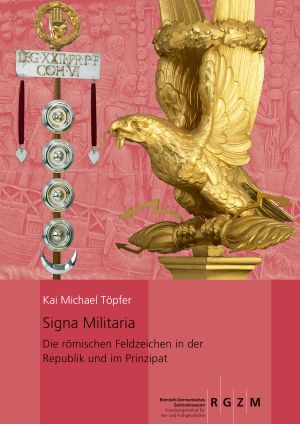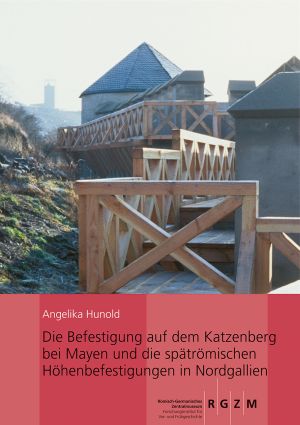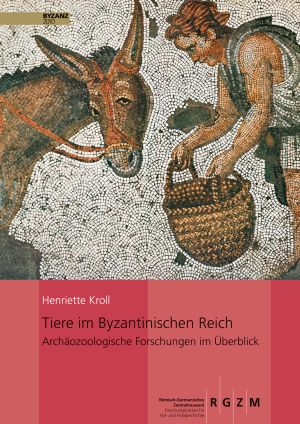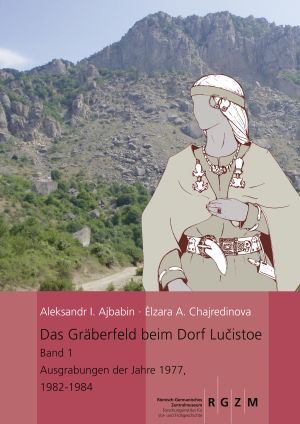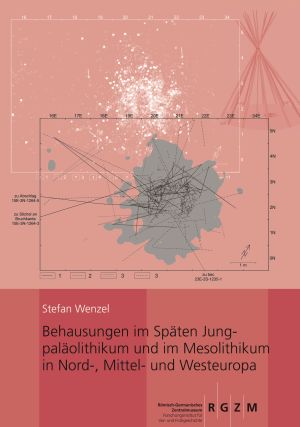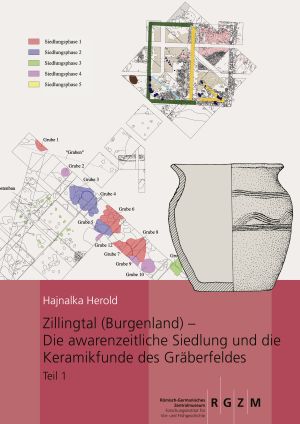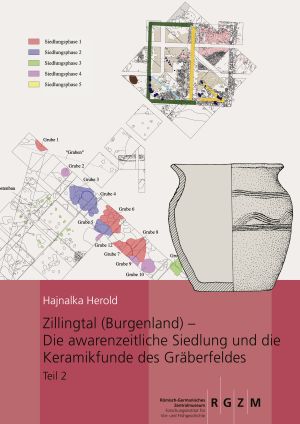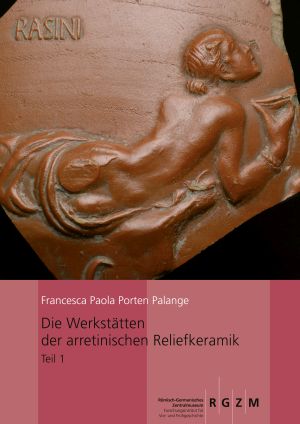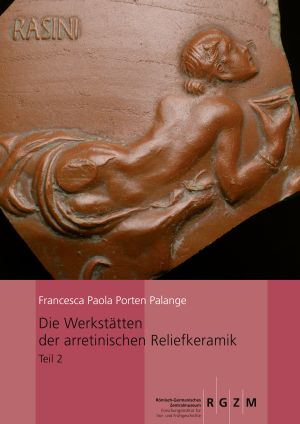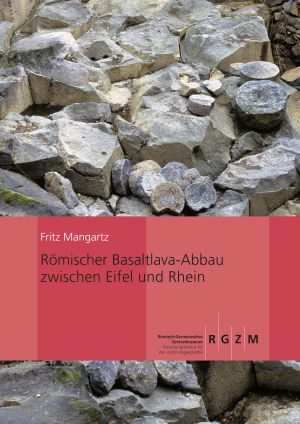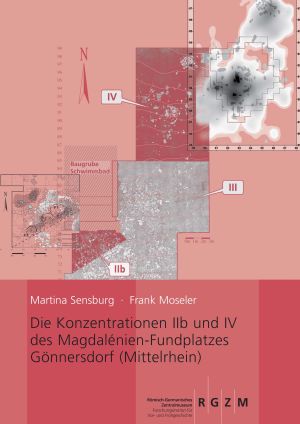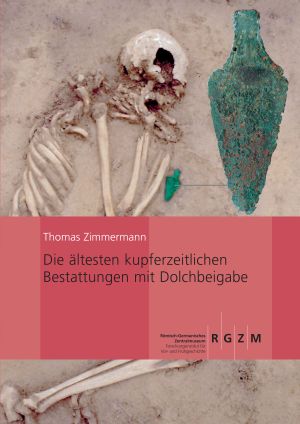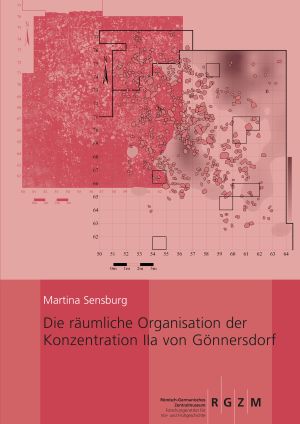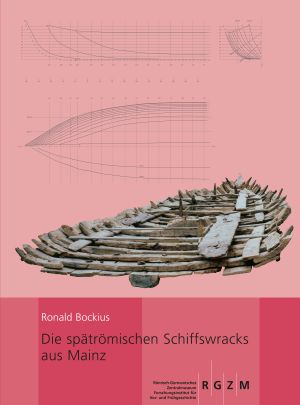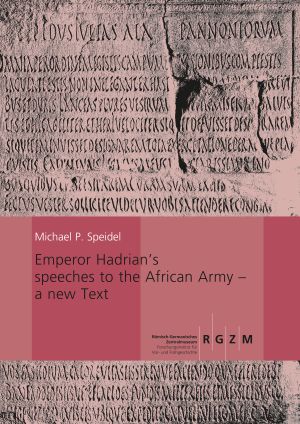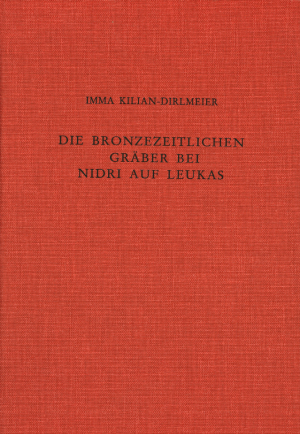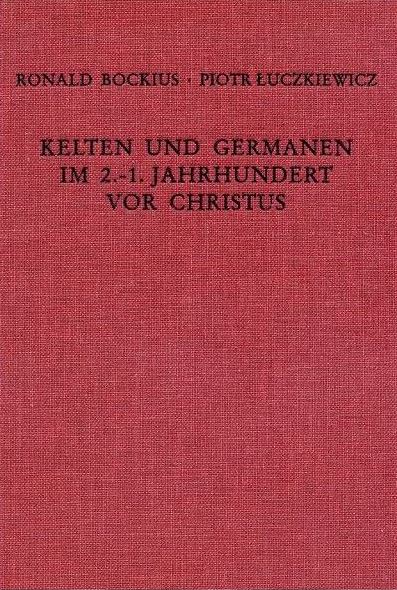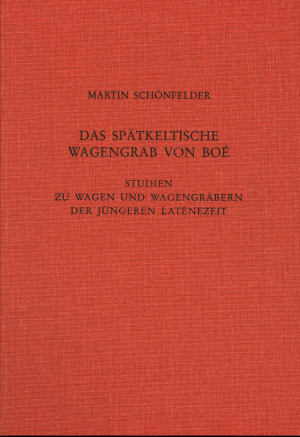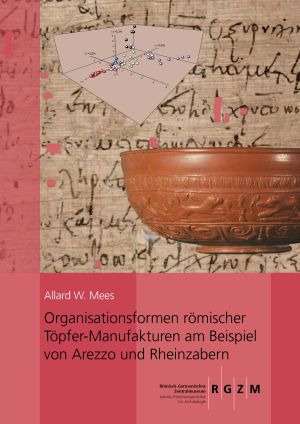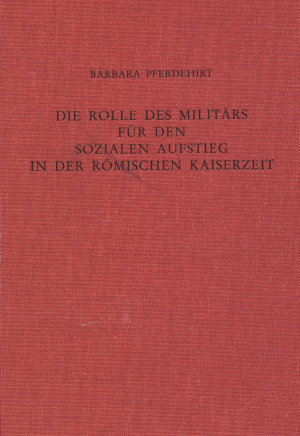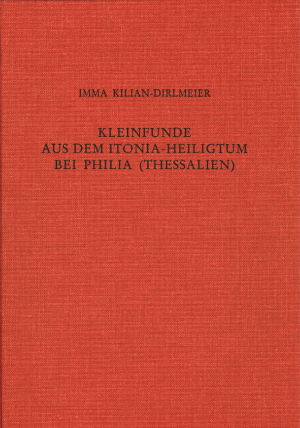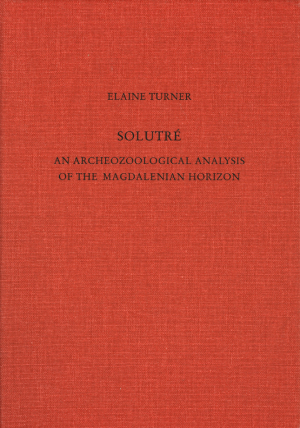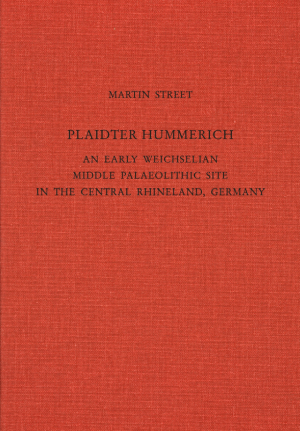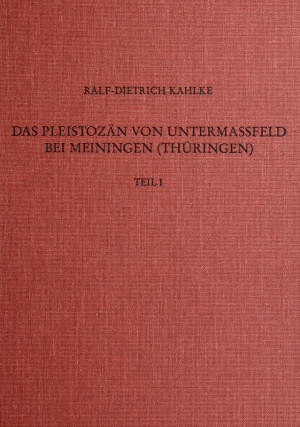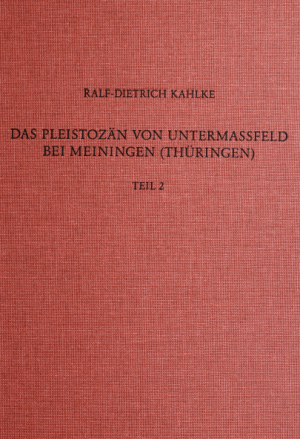Monographien des RGZM
In the Monograph series of the Romano-Germanic Central Museum, Leibniz Research Institute for Archaeology (RGZM), comprehensive studies on prehistoric and early medieval archaeology, history, culture and art are published, based on archaeological, historical and written ancient sources. Additional material and Open Data can be included in the online-version.
The digital content is planned to be enlarged by retrodigitalisation of older volumes.
Additional data on publications of this series
Italian translation of the texts from:
Joachim Weidig, Bazzano – ein Gräberfeld bei L’Aquila (Abruzzen). Die Bestattungen des 8.–5. Jahrhunderts v.Chr., Monographien des RGZM, Band 112 (Mainz 2014)
More publications of the Romano-Germanic Central Museum (RGZM)
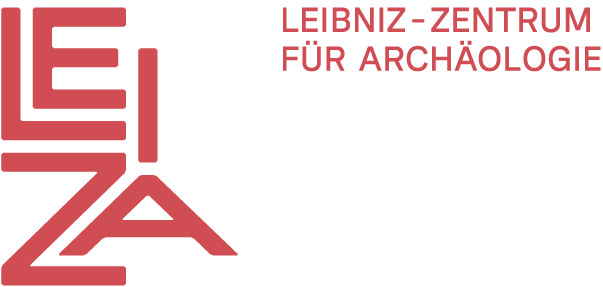
Press
Leibniz-Zentrum für Archäologie
Ludwig-Lindenschmit-Forum 1
D-55116 Mainz
Tel.: +49 6131 8885 0
E-mail: verlag@rgzm.de
Published so far
Signa Militaria: Die römischen Feldzeichen in der Republik und im Prinzipat
The Roman army had a complex system of signalling that used acoustic and visual aids - wind instruments and field signs - to communicate orders quickly. The standards used for this purpose, the signa militaria, were not only objects of daily use, but also important symbols of Roman military power and important symbols of identification for the soldiers united under them. The loss of such an emblem was considered a great shame not only by the soldiers but by all Romans.
In this volume, the standards of the Roman army are intensively analysed on the basis of an extensive and richly illustrated collection of material, including numerous ancient depictions, inscriptions and fragments of original field insignia. The focus is on their appearance, use and religious status. In addition, the depictions of standards in Roman art will be examined for their attention to detail and their semantic meaning. The result is a multi-layered picture of Roman field insignia, which were more than simple aids to orientation on the battlefield, and not only in the eyes of the soldiers.
Die Befestigung auf dem Katzenberg bei Mayen und die spätrömischen Höhenbefestigungen in Nordgallien
On the Katzenberg near Mayen, a military fortification, one of the largest of its kind, existed from about 300 AD until the middle of the 5th century to protect the economic centre of Mayen.
Based on the results obtained there, 143 other hill fortifications in northern Gaul are examined. Oriented along traffic routes, especially waterways, these fortifications by no means have the character of hidden refuges. Rather, they can also be classified as military installations that were integrated into an overarching defence concept. They ensured the continuity of civil and economic life in rural areas. Thus, hilltop fortifications are one of the elements of a deep military defence in Late Antiquity.
Tiere im Byzantinischen Reich
The Byzantine Empire (395-1453 AD) has long been the subject of research in the humanities. In particular, the large number of available written sources has provided the basis for reconstructing the political, economic and socio-cultural developments of the period. However, the written sources are largely silent on everyday matters: they did not seem worth mentioning. This includes food. Comprehensive work in the natural sciences is ideally suited to fill this gap and to corroborate the findings of the written sources.
As a first step in this direction, this volume summarises the status quo of archaeozoology for the Byzantine Empire. It shows what is already known about Byzantine animal husbandry, hunting, fowling and fishing, and what cultural, historical or eco-geographical factors influenced these economic sectors in the provinces. Regional and temporal differences are considered as well as commonalities, including the importance of Roman tradition and the role of Christianity in nutrition.
Das Gräberfeld beim Dorf Lučistoe
The cemetery near the village of Lučistoe on the southern coast of Crimea is a unique historical monument from the Migration Period. Between 1982 and 2007, 295 graves dating from the 5th to the 18th century were investigated. The catalogued source material makes it possible for the first time to study the population of the Crimean highlands over such a long period. With this volume, the RGZM begins the publication of the cemetery of Lučistoe, which is of great importance for the history of the Crimea and Eastern Europe. A detailed commentary provides a chronological and cultural-historical classification of the research results.
Behausungen im Späten Jungpaläolithikum und im Mesolithikum in Nord-, Mittel- und Westeuropa
Where hunter-gatherers camped between 15000-5000 BC in the steppes and forests of Europe, stone artefacts and hearthstones were usually left behind in large numbers. Only rarely, however, are dwellings directly verifiable on the basis of preserved construction elements.
In this book six accumulations of lithic artefacts are examined to see if there are indications that tent walls once surrounded them as an obstacle to a diffuse distribution of the stone debris to the outside: Orp Ost and Rekem 10 in Belgium, Cepoy in the Paris Basin, Geldrop 3-2 in the southern Netherlands, Berlin-Tegel IX, and Hartmannsdorf 26 in Brandenburg. In these settlement structures as well as in the dwellings and unroofed campsites of this period used for comparison, it is also possible to reconstruct work areas
Zillingtal (Burgenland) – Die awarenzeitliche Siedlung und die Keramikfunde des Gräberfeldes: Teil 1
The study of the early medieval settlement (7th-8th century AD) and the pottery finds from the associated cemetery focuses on three main areas: Avar settlement features and settlement structures in the Carpathian Basin, pottery production and use in the Avar period, and Avar traditions in the Zillingtal regarding the burial of pottery vessels.
Among the settlement finds, the early medieval reuse of the Roman ruins is of particular interest. The analysis of the find material focuses on the pottery finds, together with the pottery vessels from the Avar cemetery. Archaeological and archaeometric analyses as well as methods of experimental archaeology are used. The chronology of the pottery and the anthropological data of the burials form the basis for the analysis of Avar traditions in the burial of pottery.
Part 2 here.
Zillingtal (Burgenland) – Die awarenzeitliche Siedlung und die Keramikfunde des Gräberfeldes: Teil 2
The study of the early medieval settlement (7th-8th century AD) and the pottery finds from the associated cemetery focuses on three main areas: Avar settlement features and settlement structures in the Carpathian Basin, pottery production and use in the Avar period, and Avar traditions in the Zillingtal regarding the burial of pottery vessels.
Among the settlement finds, the early medieval reuse of the Roman ruins is of particular interest. The analysis of the find material focuses on the pottery finds, together with the pottery vessels from the Avar cemetery. Archaeological and archaeometric analyses as well as methods of experimental archaeology are used. The chronology of the pottery and the anthropological data of the burials form the basis for the analysis of Avar traditions in the burial of pottery.
Part 1 here.
Die Werkstätten der arretinischen Reliefkeramik: Teil 1
The " Katalog der Punzenmotive in der arretinischen Reliefkeramik " (RGZM Kataloge Vor- und Frühgeschichtlicher Altertümer 38, 1-2 [2004]) is now followed by these two volumes on the workshops that produced relief pottery in Arezzo and the surrounding area from about 30 BC onwards.
The first volume analyses a total of 22 workshops, supplemented by a chapter on the potter Anteros, of whom we do not yet know for which manufactory he worked. The workshops have been completely reworked and their repertoire described in greater detail. There are also many hitherto unknown hallmark motifs, as well as new attributions that have been necessary in comparison with previous research, which, despite the scarcity of material from the Arezzo Museum, gives us a much clearer and more precise picture of the genre, and the repertoire of the individual workshops becomes richer.
The second volume contains a graphic representation of the name stamps and profiles known to date for each workshop, as well as the most important border motifs and the most common vegetal ornaments, which play such a decisive role in correct and reliable attribution. For a better understanding of the series of figures described in the first volume, the major cycles are also illustrated by means of numerous pictorial combinations and hitherto unique combinations of figurative and ornamental motifs.
Ad Volume 2
Die Werkstätten der arretinischen Reliefkeramik: Teil 2
The " Katalog der Punzenmotive in der arretinischen Reliefkeramik " (RGZM Kataloge Vor- und Frühgeschichtlicher Altertümer 38, 1-2 [2004]) is now followed by these two volumes on the workshops that produced relief pottery in Arezzo and the surrounding area from about 30 BC onwards.
The first volume analyses a total of 22 workshops, supplemented by a chapter on the potter Anteros, of whom we do not yet know for which manufactory he worked. The workshops have been completely reworked and their repertoire described in greater detail. There are also many hitherto unknown hallmark motifs, as well as new attributions that have been necessary in comparison with previous research, which, despite the scarcity of material from the Arezzo Museum, gives us a much clearer and more precise picture of the genre, and the repertoire of the individual workshops becomes richer.
The second volume contains a graphic representation of the name stamps and profiles known to date for each workshop, as well as the most important border motifs and the most common vegetal ornaments, which play such a decisive role in correct and reliable attribution. For a better understanding of the series of figures described in the first volume, the major cycles are also illustrated by means of numerous pictorial combinations and hitherto unique combinations of figurative and ornamental motifs.
Ad Volume 1
Römischer Basaltlava-Abbau zwischen Eifel und Rhein
Between the towns of Andernach on the Rhine and Mayen in the Eifel, there was already one of the large mining areas for mineral raw materials in ancient times. Products made of basalt lava - above all high-quality millstones - became real export hits in Roman times. Traded on a large scale across the Rhine, they found buyers in Britain as well as in the foothills of the Alps.
The study focuses on the millstone quarries at the Bellerberg volcano near Mayen. New excavations and prospections within the framework of the Volcano Park East Eifel Project allow a detailed reconstruction of the production processes and show a high degree of division of labour. Model calculations including all finds and features also from pre- and post-Roman epochs allow quantification of the economic processes. A synthesis of all comparable mining areas in the Old World rounds off the study.
Die Konzentrationen IIb und IV des Magdalénien-Fundplatzes Gönnersdorf (Mittelrhein)
The Magdalenian site of Gönnersdorf offers unique possibilities for the spatial analysis of a Late Palaeolithic settlement area due to its richness of finds and exceptionally good preservation. While Concentration IV was already the subject of a study published in 1997, Concentration IIb is a previously unexplored settlement structure.
Concentration IIb represents a partial area of the large Concentration II, whose central settlement structure (Concentration IIa) was already dealt with in detail in 2007 (Monogr. RGZM 69). The focus is now on clarifying the function of the settlement structures in Concentration IIb as well as their temporal and spatial relationship to the neighbouring Concentrations IIa and III.
A renewed spatial analysis of Concentration IV seemed to make sense, since digital analysis methods in particular have been considerably refined since the initial work, and some previously untreated partial aspects could now be investigated. This led to detailed results regarding the relationship between latent and evident findings as well as artefact production in K-IV.
Die ältesten kupferzeitlichen Bestattungen mit Dolchbeigabe
The main objective of this study is to collect and analyze relevant closed single grave finds with mainly silex or metal daggers from the third millennium BC. However, to approach this complex of problems as comprehensively as possible, the earliest evidence of double-edged thrusting weapons from Eastern and Southeastern Europe and Western Asia Minor were also considered in their ritual funeral context. A larger digression is also devoted to the early manufacture of daggers in predynastic Egypt.
In addition to discussing chronological aspects of this arming custom, the genesis and spread of formal and technological traditions of this type of weapon are at the center of our interest. The critical question in this context is whether and how the dagger-bearing part of the population in the burial rite differs from burials at the same time without the addition of thrusting weapons. Ultimately, this leads to socio-historical considerations regarding how far the dagger can be understood as a status-forming accessory.
Die räumliche Organisation der Konzentration IIa von Gönnersdorf
The Magdalenian site of Gönnersdorf represents one of the rarest Late Palaeolithic settlements in Europe. Since its discovery in 1968, its exceptional preservation has enabled a steady increase in knowledge about the way of life of Ice Age hunter-gatherers. Thus, the fundamental investigation of the settlement structures in the large concentrations I, III and IV has already taken place. However, the central and at the same time richest concentration IIa has not yet been dealt with. With the present work, this gap can now be closed.
The focus of the analyses of K IIa is primarily on a reconstruction of the everyday activities of the former inhabitants. For this purpose, the spatial relationship of latent find distributions to the evident features, such as the central dwelling plan, the pits and the hearths, is discussed in detail. From this, as well as from the compositional analyses, decisive indications finally emerge that lead to the development of a completely new occupation model, not only for K IIa, but for the entire site.
Die spätrömischen Schiffswracks aus Mainz: Schiffsarchäologisch-technikgeschichtliche Untersuchung spätantiker Schiffsfunde vom nördlichen Oberrhein
As the only representatives of their kind, the ship finds from Mainz shed new light on late Roman military history. Their state of preservation provides insight into partly complex boat-building techniques and measures, which reveal links with the Romano-Celtic seagoing ship of north-western Europe; at the same time, Mediterranean know-how is also recognisable. Traces of ancient surveying and construction bear witness to special planning and work organisation achievements. Moreover, nowhere else is there such a comprehensive opportunity for the structural study of Roman belt drive systems and how they interacted with humans.
Designed as an evaluation of the archaeology of ships and the history of technology, and with a comparatively broad scope, the book opens up a new order of the finds, differentiating both chronologically and in terms of ship type. Meticulous documentation in words and pictures forms the basis for plan reconstructions that trace the shape, size, equipment and usability of the vessels.
Emperor Hadrian’s speeches to the African Army – a new text
In summer 128 emperor Hadrian (117-139) went to Numidia to review the fighting skills of Rome’s African army. In speeches to the troops, he evaluated the maneuvers he witnessed. Afterwards the army recorded the speeches in an inscription on the parade ground at Lambaesis. Though shortened and broken by gaps, these are the only surviving speeches of an ancient emperor to his soldiers and thus offer unparalleled insight for understanding the training and fighting skills of the Roman army.
To recover as much of Hadrian’s speeches as possible is the purpose of this book, restoring the structure of the inscription and recreating a coherent text in order to hear Hadrian’s words ring again, down through the millennia.
Die bronzezeitlichen Gräber bei Nidri auf Leukas: Ausgrabungen von W. Dörpfeld 1903-1913
This volume is a revised study of the Early and Middle Helladic tombs excavated by W. Dörpfeld in 1903-1913 on the island of Leukas/Levkada. In addition to his publication “Alt-Ithaka” (1927) his diaries, note books and photographs could be used. There are new results concerning tomb architecture, tomb offerings, the organization of the cemeteries and sozial structures. Imports from the Cycladies, the Greek mainland, the Black Sea region and the Adriatic coasts indicate long distance connections. How to explain hierarchy and wealth on a small island at the periphery of the EH II Aegean?
Kelten und Germanen im 2.-1. Jahrhundert vor Christus: Archäologische Bausteine zu einer historischen Frage
The aim of the study is to investigate the characteristics of the sepulchral representation of the equestrian and senatorial population groups in the defined area and period of investigation on the basis of archaeological-epigraphic evidence. The question pursued is whether there were binding forms of sepulchral representation within these two social groups and of what kind they were. The forms of representation recorded are also analysed and interpreted with regard to their contextual intention and / or intended statement. The material basis of the study is an extensive catalogue of newly edited or so far unpublished sepulchral monuments of both groups of persons.
Das spätkeltische Wagengrab von Boé (Dép. Lot-et-Garonne): Studien zu Wagen und Wagengräbern der jüngeren Latènezeit
In 1959, a complex was discovered in Aquitaine near the Oppidum Agen, which could be identified as a rich grave; a re-excavation by R. Boudet confirmed this in 1990. The grave can probably be assigned to a rex of the Nitiobrogens, who was buried c. 50-35 BC. The pottery includes amphorae (Dressel 1B, Lamboglia 2), Italic (Campana B among others) and local forms. The metal finds are exceptionally rich. A four-wheeled ceremonial wagon, with a construction similar to that of Dejbjerg, could be reconstructed. Chariots have been important components of rich graves since the Bronze Age. Chariot finds from Latène C/D were collected for Central Europe and methodically analysed; the graves were placed in their context.
Organisationsformen römischer Töpfer-Manufakturen am Beispiel von Arezzo und Rheinzabern unter Berücksichtigung von Papyri, Inschriften und Rechtsquellen
Roman Terra Sigillata (Samian) ceramic was made in large manufacturing sites with highly sophisticated technology. The red slip ware was distributed throughout the Roman Empire. However, the complex organisational structures within the kiln sites and the distribution network were until know largely unknown. This book uses a dual approach to unveil the internal social and organisational labor structures from the 1st century BC to the 3rd century AD. Firstly by analysing the figure type combinations of decorated terra sigillata with statistical methods and secondly by comparing the results with the evidence of nearly 40 potters’ contracts documented in Roman Egyptian papyri. Additionally, the discernable working clusters of potters are analysed for their reappearance in distribution patterns and dated by their occurrence on dated sites. The social analysis of the potters’ names involved makes it clear that slaves are not traceable in the Samian industry.
Die Rolle des Militärs für den sozialen Aufstieg in der römischen Kaiserzeit
In order to be able to take on important offices in politics, administration and the military in the Roman Empire, Roman citizenship was indispensable. Peregrine men who enlisted in military service received Roman citizenship for themselves and their children and the right to legally marry a non-Roman woman after their term of service and honourable discharge. This book examines, on the basis of so-called military diplomas, how these privileges changed over time for the various types of troops and what the consequences were for the soldiers' descendants.
Kleinfunde aus dem Itonia-Heilgtum bei Philia (Thessalien)
By epigraphical evidence the sanctuary of the Thessalian Koinon is located near the village Philia, nomos Karditsa (Thessaly). In 1960 deep ploughing in this area teared open the soil until the natural ground, a big quantity of objects was looted by the villagers and part of it reached European and American museums. There were only small places with undsisturbed stratigraphy left, when in 1963-67 D. Theocharis excavated the sanctuary. Therefore it’s mainly the the chronotypological classification of the small finds discussed in this study. Their function – votive, ritual equipment, tool etc. - are also analysed. A diachronical reconstruction of the cult activities refers to the archaeolocical material as well as to the literary tradition.
Solutré: An archeozoological analysis of the Magdalenian horizon
In this monography, the results of an analysis of the fauna from the Magdalenian horizon at Solutré, Burgundy, France are presented. They show that the Magdalenians hunted mainly horses at Solutré, but also that they took relatively high numbers of reindeer and bison. Times of death of horses, reindeer and bison suggest that the site was probably used at varying times of the year and that groups of juvenile reindeer and bison were taken on a seasonal basis. One of the characteristics of the Magdalenian faunal assemblage is the extremely low number of butchery traces and high number of carnivore gnawing marks on the remains of horse, reindeer and bison.
Plaidter Hummerich: an early Weichselian Middle Palaeolithic site in the Central Rhineland Germany
The Plaidter Hummerich Middle Palaeolithic site was located on the summit of the eponymous East Eifel volcano, which today has been almost entirely quarried away. To the east lies the flat landscape of the Neuwied Basin and the Rhine Valley. Excavations from 1983-1986 of the stratified ice age deposits of the crater fill yielded approximately 3,000 individual finds of animal remains and 2,000 finds of lithic materials. The latter give an insight into the technological skills of Neanderthals, the rocks used indicate long-range mobility. The remains of predominantly large herbivores - wild cattle, horses, red deer – provide evidence for the abundant wildlife as an available food base.
Das Pleistozän von Untermassfeld bei Meiningen (Thüringen)
The geology and palaeontology of the extraordinarily rich Early Pleistocene fossil vertebrate site of Untermassfeld has been the focus of an international investigation involving a diverse team of scientists under the coordination of R.-D. Kahlke. Part 1 of the multipart monograph covers the history of the scientific investigation of the fossil deposit and its surroundings as well as articles on the site’s geology and palaeomagnetism, its mollusc fauna, and the recovered remains of fish, amphibians, turtles and birds. The exceedingly rich amount of bovid, cervid, hippo and wild boar finds are also discussed and the volume concludes with the overall excavation findings (geology, paleozoology, taphonomy, paleoecology, and stratigraphy). All of the richly illustrated articles are in German, English or French and each has a detailed English summary.
Das Pleistozän von Untermassfeld bei Meiningen (Thüringen)
Following on from Part 1, published in 1997, Part 2 of the Untermassfeld monograph presents new results from the international team of specialists coordinated by R.-D. Kahlke. This volume contains the research history of the Early Pleistocene fossil site from 1989 to 1996 as well as investigations on the geological structure of the deposit and the formation of its exceptional accumulation of skeletal remains. Methodologies of osteological preparation and conservation are detailed along with new cervid finds and the remains of a hippopotamus skull. This volume also includes studies on the entire collection of rhinocerotids, equids, elephantids, canids, ursids, mustelids and hyaenids together with corresponding finds of coprolites. The richly illustrated articles are written in German or English and each has a detailed English summary.



